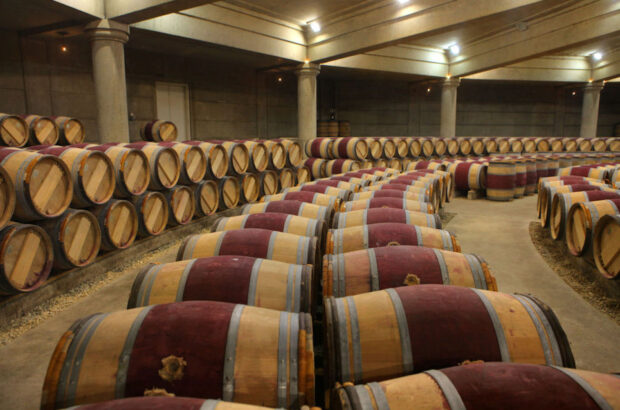Now that the vineyards are strewn with red, orange and ochre leaves, Argentinian wineries have brought the 2021 harvest – the second to take place during the pandemic – to a close. After a worrying beginning and a series of unusual climatic events, every region is forecasting excellent wines as the different terroirs demonstrate their adaptability.
Mendoza: a slow-motion harvest 2021
The province that contains 70% of Argentinian vineyards has completed a very challenging harvest but wine-growers and oenologists look certain to be rewarded for their efforts in Mendoza.
Just as things were kicking off, on 5 October 2020, frost hit many vineyards in the eastern part of the province, where the majority of high volume wines are produced. While the rest of the province was able to shrug off the damage, the region anticipated a deflating 25% drop in yields.
Later, in the summer, the climate would also be cause for concern. Following a warm beginning, by mid-January temperatures started to drop and in February rain began to fall, continuing into the first week of March. Because of the increased cloud cover and cooler days, the number of degree days logged in the Mendoza summer was 6% below the historical average.
Grapes thus took their time to ripen, especially the whites, and the increased risks to vineyard health associated with greater rainfall had producers fretting. When temperatures rose again in March, the weather turned dry and grapes suddenly began to ripen quickly, leading to an overlap between the harvests of white and red grapes.
Because the available labour was reduced due to pandemic protocols, logistics, transport and storage at the winery became a genuine conundrum.
‘In years like these, viticultural expertise comes to the fore,’ says Sebastián Zuccardi, winemaker in the Uco Valley. ‘We thought long and hard about when to harvest; the whites took a while to ripen. For instance, we harvested Chardonnay from San Pablo at the same time as Malbec from Altamira. But I’m very happy, it’s a year of lower concentration with high acidity.’
The stress suffered by winemakers during the delays and uncertainty appears to have been worth it. ‘It’s an extraordinary harvest; surprisingly healthy given how things were looking at one point. I’m happy with the whites, especially Chardonnay, we had low pHs with moderate alcohol potentials,’ agrees Mariano di Paola, chief winemaker at Rutini Wines.
Fernando Buscema, executive director at the Catena Institute of Wine, is similarly pleased: ‘The cooler climate and rain followed by the sunny period in March provided Bordeaux-style conditions for the Cabernet Sauvignon, which arrived healthy and ripe with low alcohol content.’
As regards Malbec in Mendoza, Juan Pablo Murgia from Bodega Argento, which owns vineyards in both Luján de Cuyo and the Uco Valley, reports: ‘This was an exceptional year that will produce a range of styles among Malbecs from different regions. We’ve seen good expression of fruit, balance, tangy acidity, mild alcohol and complex textures.’

Bodega Argento’s head winemaker, Juan Pablo Murgia, inspects grapes in Altamira, Uco Valley
The rest of the Argentina harvest 2021
In San Juan, the second largest wine-producing province, the 2021 harvest was one of the best in recent years, especially in the Pedernal Valley, a key region for high end wines. Located at a height of 1,371m above sea level, the GI experienced the coolest climate of all the valleys in the Andean foothills.
‘We got wines with very good concentration, much lower alcohol potential than in other years and excellent acidity. The fruity flavours are potent, the tannins are silky and the grape varieties are expressing themselves very well. It was a remarkable year for the region,’ enthuses Paula González, winemaker at Pyros Wines.
In the Calchaquí Valleys, where vineyards are planted at altitudes of between 1,676m and 3,048m, the harvest was fairly typical for the region with average rainfall in Cafayate and a warm summer that brought the harvest forward a few days.
Among the very high altitude vineyards in the northern Calchaquí Valleys, it was a dry year with just 50mm rainfall. ‘The drought resulted in well-balanced grapes with good ripeness and freshness combined with low alcohol,’ says Thibaut Delmotte, winemaker at Bodega Colomé.
In the winemaking regions of Patagonia, the start of the 2020/2021 season was cool with unusual snowfalls but this was followed by a dry, warm, windy summer that also brought forward the harvest in Alto Valle de Río Negro.
‘We had a healthy harvest with low yields. The whites will be very pleasant, fresh and aromatic; while the reds will be rounded and complex with good colour and balance,’ says Juan Martin Vidiri, production manager at Humberto Canale.
In San Patricio del Chañar in Neuquén Province, where conditions were even windier, Ricardo Galante at Bodega del Fin del Mundo reports: ‘It’s a year with plenty of fruit, rich natural acidity and low pHs. In addition to outstanding Pinot Noir and Chardonnay harvests, we noticed a significant improvement in the Merlots, which have an attractive colour, ripe fruit aromas and elegant tannins.’
In the emerging, most extreme regions of the country such as Chubut, which boasts the most southerly vineyards in the world, and Jujuy, where vines are grown at between 2,133m and 3,048m, the harvest is also looking good, meaning that across Argentina, the end of fermentation is being eagerly awaited. Expectations are high that some excellent wines are going to be bottled over the next few months.







